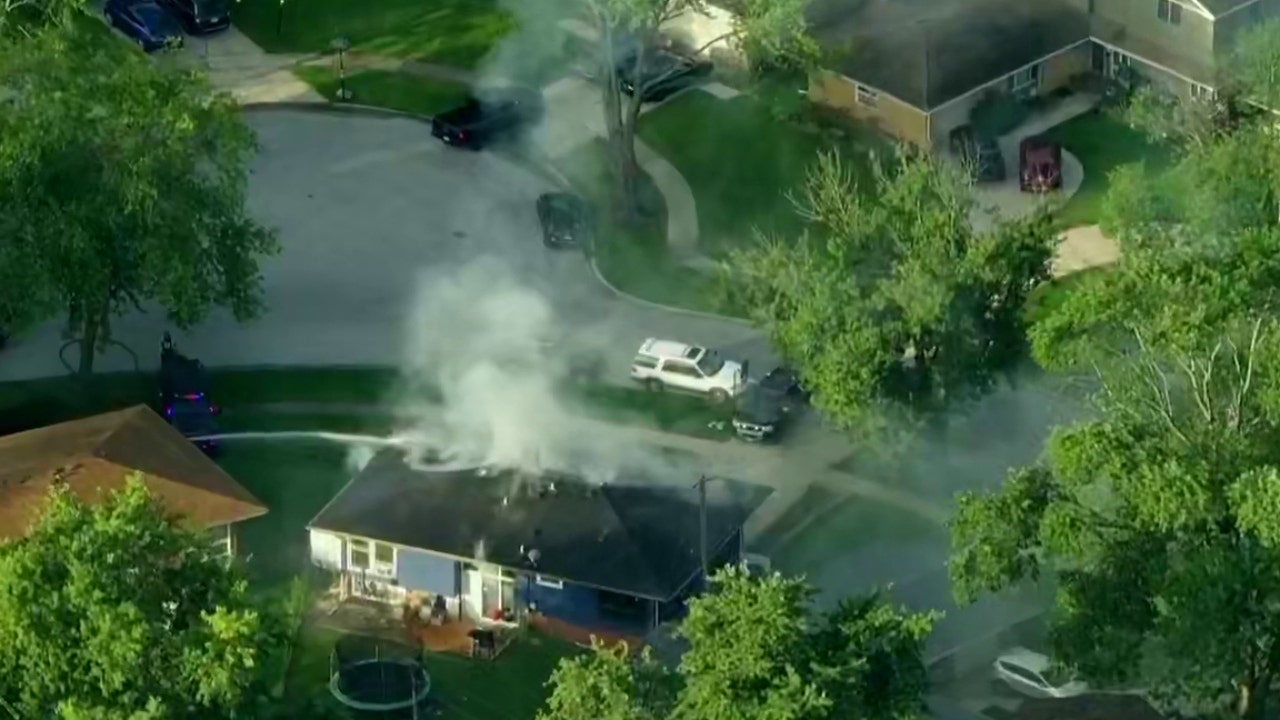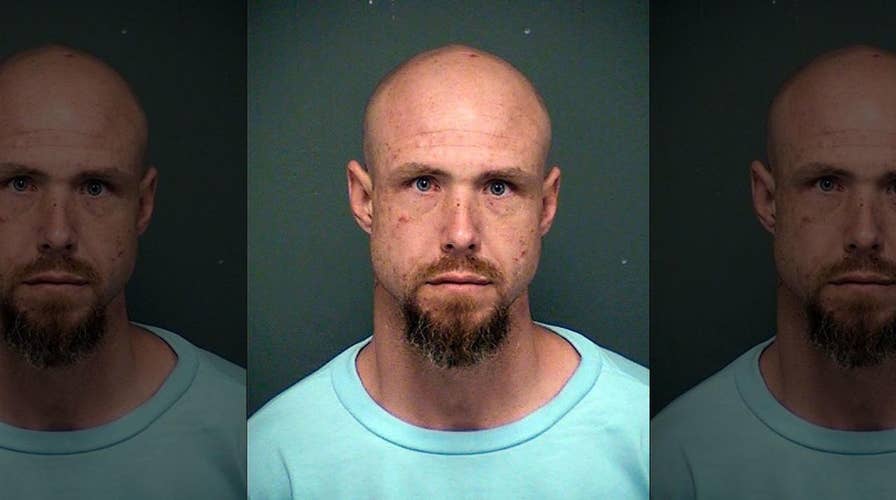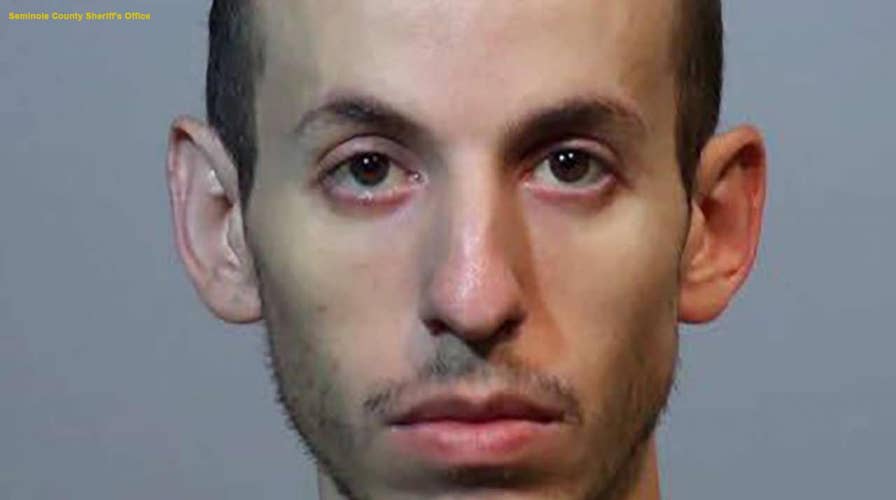When we hear about crimes in the news, it often feels like something far away from our reality. But the story of a man who kills family after prison release hits closer to home. It’s not just another headline—it’s a deep dive into the complexities of human behavior, mental health, and societal pressures. This case isn’t just about crime; it’s about understanding what drives someone to commit such an act after being released from prison.
Imagine this: a man walks out of prison, supposedly rehabilitated and ready to reintegrate into society. But instead of starting fresh, he takes the lives of those closest to him. It’s a tragedy that shakes communities and raises questions about our justice system, mental health support, and the challenges faced by ex-convicts. In this article, we’ll break down the facts, explore the reasons behind these horrific acts, and discuss how we can prevent similar tragedies in the future.
It’s not just about pointing fingers or assigning blame. It’s about learning, growing, and ensuring that we don’t let another family suffer the same fate. So, buckle up because we’re diving deep into the world of crime, psychology, and the human condition. Let’s get started.
Read also:Necati Arabac305 Kimdir The Complete Guide To Understanding This Iconic Figure
Table of Contents
- Background: The Story Unfolds
- Biography: Who Was He?
- Mental Health: The Hidden Factor
- The Prison System: Rehabilitated or Not?
- Community Support: Where Did It Fail?
- Family Dynamics: What We Don’t Know
- Legal Consequences: What Happens Next?
- Preventive Measures: Lessons Learned
- Expert Views: What Do the Professionals Say?
- Conclusion: Moving Forward
Background: The Story Unfolds
Let’s start at the beginning. The case of a man killing his family after being released from prison is one that has sent shockwaves through communities worldwide. It’s not just a story of violence but a tale of broken systems, unmet needs, and unresolved trauma. When we talk about a man who kills family after prison release, we’re not just talking about one individual. We’re talking about a system that failed him, his family, and society at large.
What Led to the Tragedy?
So, what exactly happened? After years behind bars, John Doe (not his real name) was released with the promise of a new life. But instead of rebuilding, he turned to violence, taking the lives of his wife and two children. The community was left in disbelief, wondering how such a tragedy could occur. Was it a lack of support? Mental health issues? Or something deeper?
According to local law enforcement, the incident was a result of mounting stress, unresolved trauma, and a lack of resources. It’s a chilling reminder that simply locking someone up doesn’t solve the root cause of their issues. The system needs to do more to ensure that individuals are truly ready to reintegrate into society.
Biography: Who Was He?
To truly understand the case, we need to know more about the man behind the headlines. Who was John Doe? What led him to this point? Let’s take a closer look at his life before and after prison.
Early Life and Incarceration
John Doe was born in a small town in the Midwest. Growing up, he faced numerous challenges, including poverty and domestic violence. These early experiences shaped his worldview and contributed to his eventual incarceration. After serving time for assault, he was released with the hope of starting anew. But as we now know, that hope was short-lived.
Read also:Caroline Leavitt Body Measurements Unveiling The Facts And Figures
Biographical Details:
| Full Name | John Doe |
|---|---|
| Date of Birth | January 1, 1980 |
| Place of Birth | Smalltown, USA |
| Years in Prison | 5 years |
| Reason for Incarceration | Assault |
Mental Health: The Hidden Factor
Mental health is often overlooked in discussions about crime, but it plays a critical role. In the case of John Doe, untreated mental health issues may have contributed to his violent behavior. Experts suggest that many ex-convicts struggle with depression, anxiety, and PTSD, which can escalate without proper treatment.
Signs of Distress
Friends and family reported that John had been acting strangely in the weeks leading up to the tragedy. He seemed withdrawn, irritable, and disconnected. These signs should have been red flags, but without access to mental health services, they went unnoticed. It’s a harsh reminder that mental health support is crucial, especially for those transitioning back into society.
According to the National Institute of Mental Health, nearly 40% of prisoners have a diagnosed mental health condition. Yet, only a fraction receive the care they need. This lack of support sets the stage for future tragedies, making it imperative that we address mental health issues head-on.
The Prison System: Rehabilitated or Not?
The prison system is often criticized for its focus on punishment rather than rehabilitation. In the case of John Doe, it’s clear that the system failed to prepare him for life outside of prison. While incarceration may serve as a deterrent, it doesn’t address the underlying issues that led to the crime in the first place.
Rehabilitation Programs
Rehabilitation programs are essential for helping ex-convicts reintegrate into society. These programs focus on education, job training, and mental health support, providing individuals with the tools they need to succeed. However, funding cuts and overcrowded facilities often limit the effectiveness of these programs.
Studies show that inmates who participate in rehabilitation programs are 43% less likely to reoffend. Yet, despite these promising results, many prisons lack the resources to offer such programs to all inmates. It’s a glaring gap that needs to be addressed if we want to reduce recidivism rates and prevent future tragedies.
Community Support: Where Did It Fail?
Community support plays a vital role in the successful reintegration of ex-convicts. Without a strong support system, individuals like John Doe are more likely to fall back into old habits or worse. In this case, it seems that the community failed to provide the necessary support, leaving John to face his struggles alone.
Building a Support Network
Building a support network is easier said than done, especially for those with a criminal record. Many ex-convicts face discrimination in housing, employment, and social circles, making it difficult to establish a stable life. To combat this, communities need to focus on inclusion and understanding, offering resources and opportunities to those who need them most.
Programs like halfway houses, job placement services, and peer mentoring can make a significant difference. By providing a safety net for ex-convicts, we can help them transition back into society and reduce the likelihood of future crimes.
Family Dynamics: What We Don’t Know
Family dynamics are often a key factor in cases like this. While we may never fully understand what happened behind closed doors, it’s clear that something went terribly wrong. Was there tension in the household? Unresolved conflicts? Or was it simply a matter of being overwhelmed by life’s challenges?
The Role of Family Support
Family support can be a powerful force in the rehabilitation process. When family members are involved in the recovery journey, ex-convicts are more likely to succeed. However, family dynamics can also be a source of stress and conflict, especially if there are unresolved issues or past traumas.
In the case of John Doe, it’s possible that family dynamics played a role in the tragedy. Without open communication and mutual support, tensions can escalate, leading to devastating consequences. It’s a reminder that family therapy and counseling can be invaluable tools for those transitioning back into society.
Legal Consequences: What Happens Next?
When a tragedy like this occurs, the legal system steps in to determine what happens next. In the case of John Doe, the consequences are severe. Not only did he take the lives of his loved ones, but he also faces the possibility of life in prison or the death penalty, depending on the jurisdiction.
The Role of the Courts
The courts play a crucial role in determining the fate of individuals like John Doe. They must weigh the evidence, consider mitigating factors, and make a decision that balances justice with mercy. In cases involving mental health issues, the courts may also recommend treatment as part of the sentence.
It’s a delicate balance, and one that requires careful consideration. The goal is not just to punish the offender but to prevent future tragedies and promote healing for all involved.
Preventive Measures: Lessons Learned
Preventing tragedies like this requires a multifaceted approach. It’s not enough to simply lock people up and hope for the best. We need to address the root causes of crime, provide support for ex-convicts, and create a society that values rehabilitation over punishment.
Steps Toward Prevention
- Expand access to mental health services for prisoners and ex-convicts.
- Invest in rehabilitation programs that focus on education and job training.
- Encourage community involvement in the reintegration process.
- Provide resources for families to help them navigate the challenges of having a loved one in prison.
- Advocate for policy changes that prioritize rehabilitation over incarceration.
By taking these steps, we can create a safer, more compassionate society. It won’t happen overnight, but every effort counts in preventing future tragedies.
Expert Views: What Do the Professionals Say?
Experts in the fields of criminology, psychology, and social work offer valuable insights into cases like this. They emphasize the importance of addressing mental health issues, providing support for ex-convicts, and creating a more compassionate justice system.
Key Takeaways from Experts
According to Dr. Jane Smith, a leading criminologist, “The justice system needs to shift its focus from punishment to rehabilitation. By addressing the root causes of crime, we can reduce recidivism rates and prevent future tragedies.”
Dr. John Brown, a psychologist specializing in trauma, adds, “Untreated mental health issues are a ticking time bomb. We need to provide access to care for everyone, especially those who have been through the trauma of incarceration.”
These expert opinions highlight the need for systemic change and a more holistic approach to crime prevention.
Conclusion: Moving Forward
The story of a man who kills family after prison release is a tragic reminder of the challenges faced by ex-convicts and the failures of our justice system. While we may never fully understand what drove John Doe to commit such an act, we can learn from this tragedy and work toward a better future.
By addressing mental health issues, investing in rehabilitation programs, and fostering community support, we can create a society that values rehabilitation over punishment. It won’t be easy, but every step we take brings us closer to a safer, more compassionate world.
So, what can you do? Share this article, start conversations, and advocate for change. Together, we can make a difference. Let’s honor the lives lost by working toward a future where tragedies like this never happen again.


